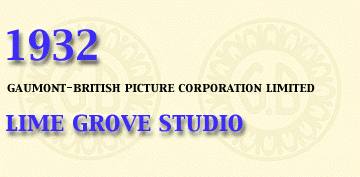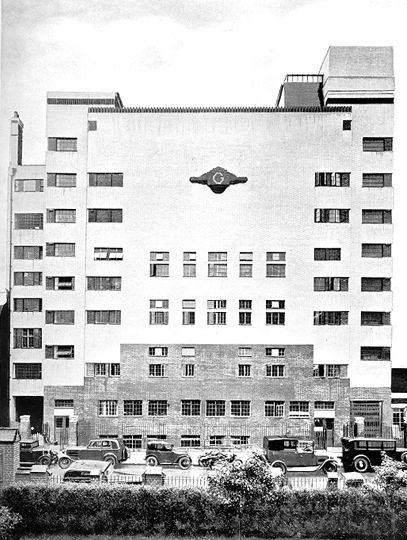



CLICK ON THE LINKS BELOW FOR INFO & PHOTOS ABOUT THE STUDIO'S FACILITIES.
In the original instance it was the British film industry which taught the world much of its early film knowledge, and, before the 1914-18 war, was recognised as the leader of the world industry. However, the position of the British film industry at the end of the war was an ironic travesty of the leadership it had enjoyed in the world before the war. The Armistice found it at its last gasp, moribund.
During the same period America won the position of ascendancy, and consolidated that position with superb organisation. Not only were the main markets controlled by their sales organisation, they had also obtained the most favourable exhibition facilities in the world markets.
Success and brilliant administration inevitably brought more and more success, and by 1922 the American industry was astride the whole film world, like a Colossus. The British industry appeared completely crushed.
In 1922, Isidore Ostrer, in association with his brothers, Mark and Maurice Ostrer, acquired Leon Gaumont's holding in the original Gaumont Company, thus making it an entirely British concern.
In the ten years from 1922 to 1932, Isidore Ostrer brought his plans to fruition, step by step, in the face of relentless opposition. The culmination of his plans were the completion of the new studios at Lime Grove, equipped with unrivalled production resources.
£250,000 was spent on the new Lime Grove Studios, excluding the cost of modernising the existing 1927 studios and the replacement of the historic 1914 glass studio by another new building.
Isidore Ostrer and the Gaumont British Corporation insisted that throughout only British material and British labour should be used for the immense undertaking in construction and refurbishment. The result of this decision helped to counteract the unhappy state of the labour market during the economic depression of the early 1930s.
Thousands of workpeople were affected either directly or indirectly by this Gaumonts British enterprise. 1,400 tons of steel and over a million bricks were used for the new studio construction.

The studio in Lime Grove, Shepherd's Bush W12
1932
Control of all Gaumont-British production, either at Lime Grove or at Islington, was in the joint hands of Mark Ostrer and C. M. Woolf, Joint Managing Directors of the Corporation, and Maurice Ostrer acted as liaison officer. Their chief executive officer was Michael Balcon, Managing Director of Gainsborough Pictures, who thus become producer of all Gaumont-British films.
It was proposed to spend £1,000,000 each year on making 40 films a year at Lime Grove (Gaumont pictures) and Islington (Gainsborough pictures). This is quite apart from any other investments the Corporation made in other production companies.
Alfred Hitchcock.
Alfred Hitchcock directed eleven films for Gaumont and Gainsborough. Before his directing debut, he adapted the screenplays for three Gainsborough films in 1924 and 1925. He then directed five Gainsborough films in 1926 and 1927. After a six year absence, he directed five Gaumont films between 1934 and 1937, including "The 39 Steps". And directed one more Gainsborough film in 1938, "The Lady Vanishes".
CLICK HERE for the specification of the 1932 studio complex.
CLICK HERE for info & photos of the production studios.
CLICK HERE for info & photos of the lighting facilities.
CLICK HERE for info about the water tank & ventilation system.
CLICK HERE for info & photos of the sound facilities for talking pictures.
CLICK HERE for info & photos of the film processing laboratories.
CLICK HERE for info of story material for film production, & model for "Rome Express".
CLICK HERE for info of directors & artists under contract, & photos of dressing rooms & make-up.
CLICK HERE for photos of the art department, modelling & carpentry.
CLICK HERE for info about apprenticeships & photo of recreation facility.